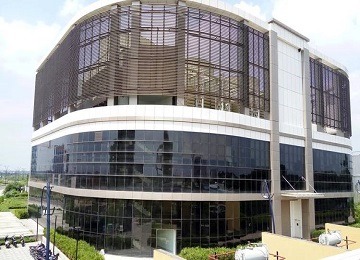District cooling system is an energy efficient technology about which the world is gradually coming to know about. It has already been adopted in many parts of the world but has finally been implemented in India for the very first time at the GIFT City, or Gujarat International Finance Tec-City. The first phase of the District Cooling system has an operational capacity of 10,000 TR and it has been working since April 2015.
More about GIFT City itself
GIFT City is itself India’s first International finance service center with global benchmarking that has been developed as joint venture by the Gujarat Government and Gujarat International Finance Tec- City Company Limited. GIFT City is the financial and IT services hub and has been designed equal to other financial centers like Shanghai, La Defense in Paris, Hong Kong, London, Dubai and Singapore among others. It has been developed on 886 acres of land and comprises of Special Economic Zone. Along with District Cooling System or DCS, many other world class infrastructural facilities have been built here like Automated Waste Collection System, Underground Utility Tunnel and availability of electricity from two different sub stations. Such massive use of infrastructure is being done for the first time in the country.
Key inputs about this new technology
As far as DCS is concerned, it distributes thermal energy in the form of very cold water from a central source and this is sent to multiple buildings via a network of underground pipes which is used to cool down spaces. The heat rejection is done from a central cooling plant and that it removes the need for separate cooling systems for individual buildings, which has resulted in huge cost savings.
Likewise, District Cooling System is also known as District Heating System in cold countries where the same technology is used for heating up spaces and the system is currently in use across the world. Three main components are used in this system- the central cooling plant, the chilled distribution network and the consumer system or the energy transfer station.
The central plant generates chilled water with the help of a compressor driven chillers, also known as absorption chillers. Large, centrifugal chillers that are extremely efficient are installed to make use of the economies of scale. There are chilled water pumps as well as well as cooling towers with condenser water pumps, along with thermal energy storage tank and electric power distribution system. There is also a control system for centralized automation and for controlling all the additional equipments. The distribution system is comprised of pre- insulated chilled water supply and return pipes and they are buried or are shaped as underground trenches.
How GIFT City is being transformed through the system
As GIFT City is going to be developed in phases, depending upon how fast it is going to be occupied, the development of the DCS plants and utility tunnel for the entire GIFT City would also be taken up in phases likewise, in keeping with the actual city development. It is essential for DCS to be designed in such a way so that it cater to the needs of air conditioning even during the peak load stages, in the hottest summer months. Some key parameters have been developed which were likewise analyzed and were built into the system design so that the critical loads could be met, as well as comply with the economic boundaries as well. They included demand assessment, flexibility in plant design, planning in line with city development, developing physical infrastructure for current and future needs, optimizing the piping network, and of course, user satisfaction.
With these parameters to work with, DCS has revolutionized GIFT City and is a step towards greener environment.





